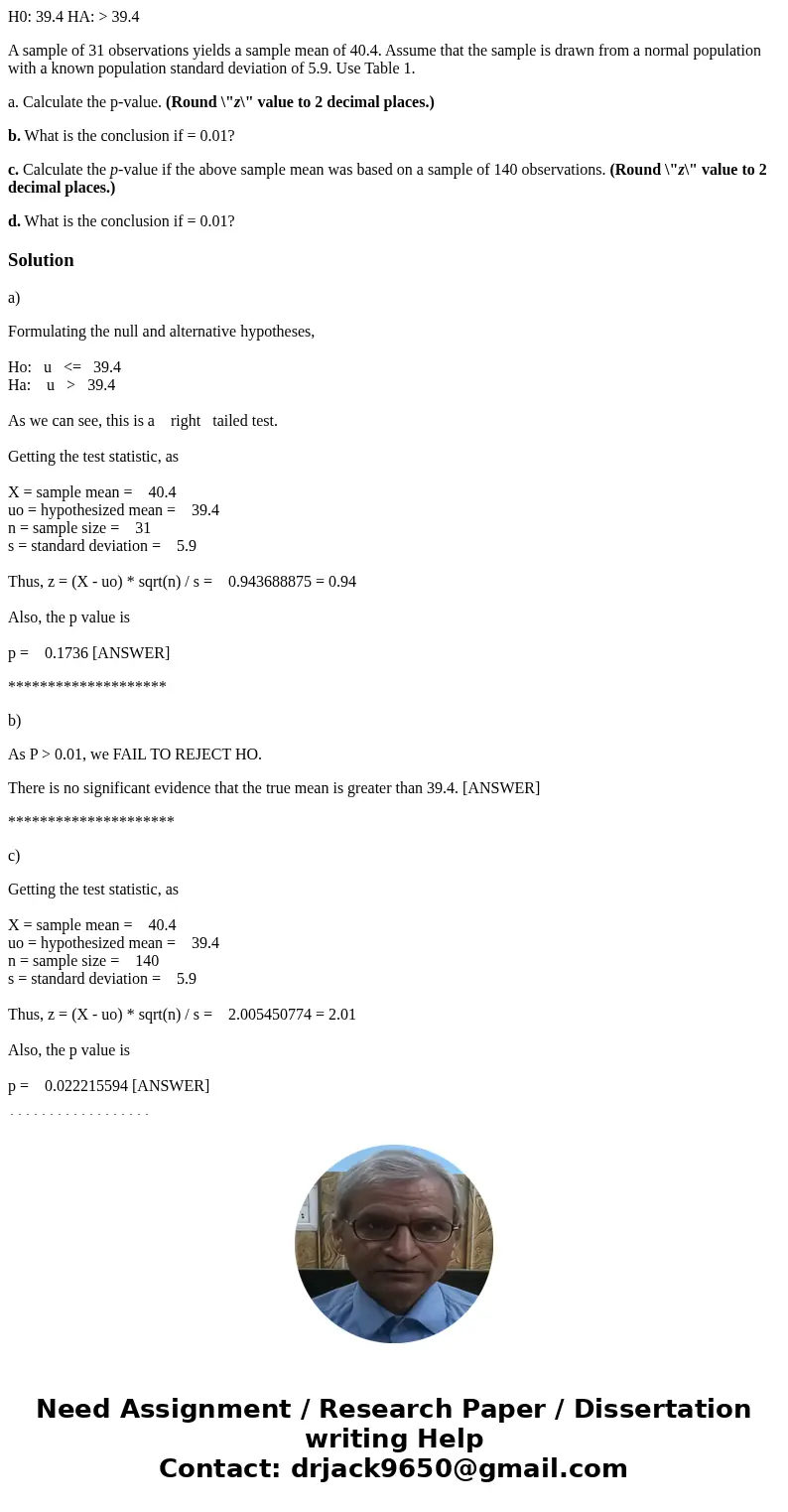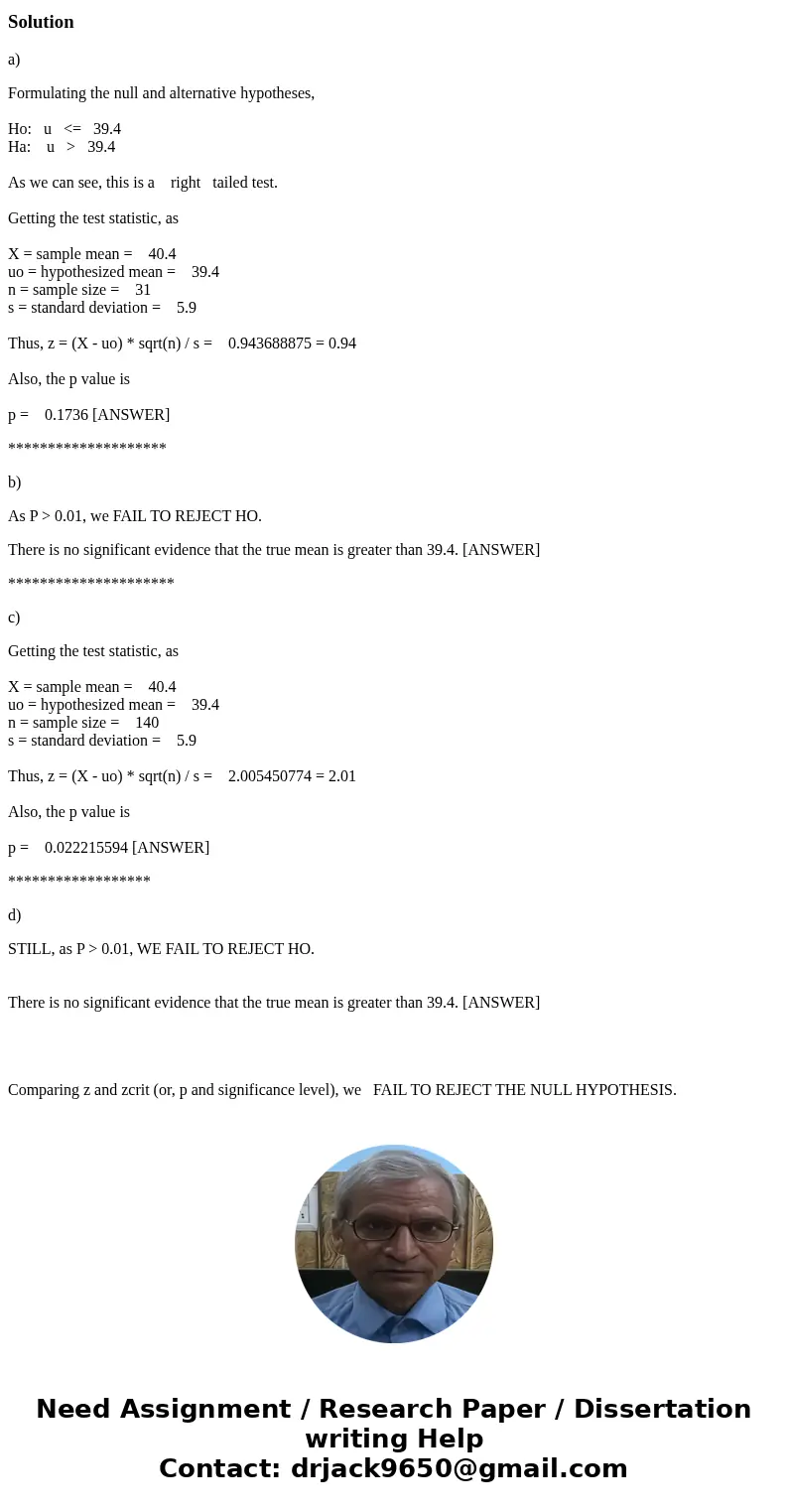H0 394 HA 394 A sample of 31 observations yields a sample m
H0: 39.4 HA: > 39.4
A sample of 31 observations yields a sample mean of 40.4. Assume that the sample is drawn from a normal population with a known population standard deviation of 5.9. Use Table 1.
a. Calculate the p-value. (Round \"z\" value to 2 decimal places.)
b. What is the conclusion if = 0.01?
c. Calculate the p-value if the above sample mean was based on a sample of 140 observations. (Round \"z\" value to 2 decimal places.)
d. What is the conclusion if = 0.01?
Solution
a)
Formulating the null and alternative hypotheses,
Ho: u <= 39.4
Ha: u > 39.4
As we can see, this is a right tailed test.
Getting the test statistic, as
X = sample mean = 40.4
uo = hypothesized mean = 39.4
n = sample size = 31
s = standard deviation = 5.9
Thus, z = (X - uo) * sqrt(n) / s = 0.943688875 = 0.94
Also, the p value is
p = 0.1736 [ANSWER]
********************
b)
As P > 0.01, we FAIL TO REJECT HO.
There is no significant evidence that the true mean is greater than 39.4. [ANSWER]
*********************
c)
Getting the test statistic, as
X = sample mean = 40.4
uo = hypothesized mean = 39.4
n = sample size = 140
s = standard deviation = 5.9
Thus, z = (X - uo) * sqrt(n) / s = 2.005450774 = 2.01
Also, the p value is
p = 0.022215594 [ANSWER]
******************
d)
STILL, as P > 0.01, WE FAIL TO REJECT HO.
There is no significant evidence that the true mean is greater than 39.4. [ANSWER]
Comparing z and zcrit (or, p and significance level), we FAIL TO REJECT THE NULL HYPOTHESIS.


 Homework Sourse
Homework Sourse